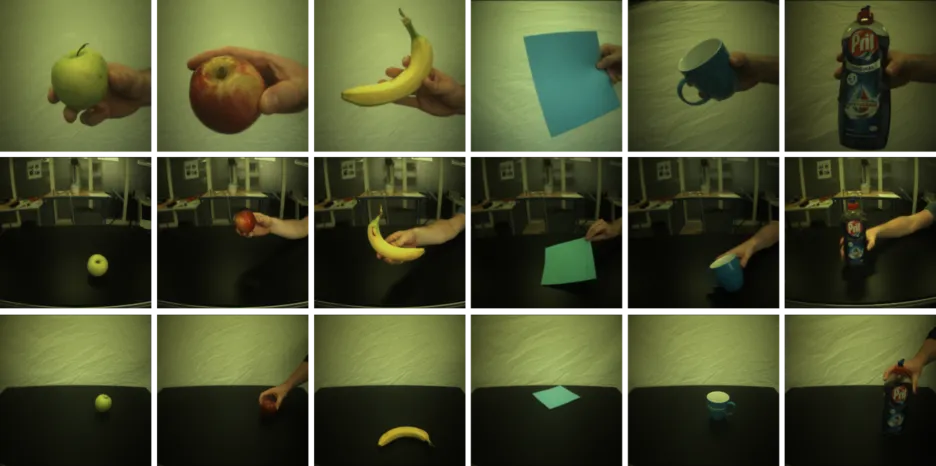Object data set

This collage shows one picture for some of the 11 known object categories, split in 23 classes. The data set was obtained in three different settings: 1) white background, 2) table, and 3) table with white background. The images shown in the first setting are taken with low-resolution cameras, images in the second and third setting are acquired with high resolution cameras. This is done because better lighting conditions were required for the black table. In the first setting, the objects are held closer to the cameras than in the second and third settings.
The TUM-ICS data set contains 16,500 training images, 8,250 validation images and 8,250 testing images with a resolution of 240×240. The 16,500 training images are created by 500 images per setting × 3 settings × 11 objects: Each object class contains 500 training images per setting or 1,500 total per object. If one object has multiple objects in its category, i.e. ’Plate’ consists of ’Plate white’, ’Plate red’, ’Plate orange’, ’Plate green’, the 1,500 images per object (e.g. ’Plate’) consist of a random number of images of the white, red, orange, or green ’Plate’ class each. The objects are recorded in three experimental setups with three different backgrounds: 1) white background, 2) table, and 3) table with white background, see Fig. above. During the acquisition period, all images that were acquired in the first setting contain the supervisor’s hand in the image. Because a table was used for the second and third setting, objects were both placed on the table without a hand in the image and were rotated with a visible hand in the images.
The data set can be found in the following link: http://web.ics.ei.tum.de/datasets/cooking/TUM-ICS-DATASET.tar.gz
Please see the master thesis by Niklas Barkmeyer for more details on this data set.